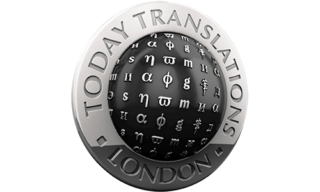Google’s newest attempt at Star Trek style instant translation incorporates something a lot of us have had our eyes on for some time, the Word Lens instant text translation app. While some are ecstatic to have this power at their fingertips, others worry that this is another step in the dumbing-down of western civilisation.
Of course, this is machine translation, and it has all of the flaws that that implies: a lack of subtlety, the inability to pick up on idiom or shades of meaning and the fact that some words just do not have simple equivalents. Word Lens will do better with “TO AIRPORT” than Anna Karenina. Still, by all reports it does a limited job very well.
So, will the ability to see signs, menus and other text in your own language on a screen or in augmented reality (when added to the existing near-real-time audio translation features of the app) destroy the chance to learn new languages?
The answer is “probably not”, but the reason why depends on what type of tourist you are.
One type doesn’t really care about language. They have come to a new country to “do some work”, “see some art” and/or “have some ___ food”. The fact that people speak, think and live differently is inconvenient to this kind of traveller, and they wish “everyone would just speak English” (or French, or Chinese, etc.)
This type of tourist was never going to learn the language in any case, and having instant visual or audio translation will simply let them get on with whatever they have gone abroad to “do” more quickly.
The other type of tourist sees the language of the country they are in as an important part of the culture. As the interface people have with each other and the world, and the foundation of the way they live. These travellers are fascinated with words, how they differ and how they are the same.
The first time I travelled to The Netherlands, I didn’t speak a word of Dutch. Actually, I tell a lie. I could pronounce “dank-oo-vell”, but not spell it. One of my first tasks was getting from the airport section of Schiphol to the train section. As you would in any international airport, I looked for the picture of a train and an arrow, and found it quickly. I noticed something, though. The word “spoorweg”. I stopped and thought about that for a moment.
I knew Dutch was related to German in a lot of ways, and that they probably made words by mashing them together with the same unsubtle enthusiasm as in both German and English. So, it was a compound word. Two syllables: spoor and weg. I had seen “weg” before. My hotel was on something-or-other-weg. It sounded like “way”. Maybe it meant way, or street, or path! so what is “spoor” Train! I bet it means train! I’m going to the train path! In fact “spoor” means something much closer to “rail” and the word was a much more down-to-earth transliteration of “railway”, but I still like “train path” better.
This type of tourist will pick up the language faster with an instant translator, no matter how flawed and unsubtle. The fact that it is visual, text based, is even better, as we can attempt to analyse the differences in what we see, and develop the basic, flawed and unsubtle tools we need to start learning a language.

